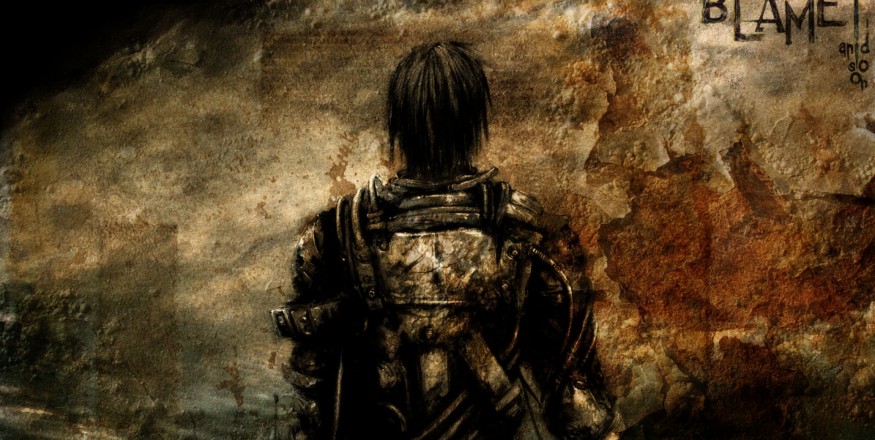The Lesser Key of Solomon, also known as Clavicula Salomonis Regis or Lemegeton, is an anonymous grimoire (or spell book) on demonology. It was compiled in the mid-17th century, mostly from materials a couple of centuries older. It is divided into five books—the Ars Goetia, Ars Theurgia-Goetia, Ars Paulina, Ars Almadel, and Ars Notoria.1108Please respect copyright.PENANA8KDfscFEmK
Ars Goetia1108Please respect copyright.PENANA2gXLkAL6Pl
The most obvious source for the Ars Goetia is Johann Weyer's Pseudomonarchia Daemonum in his De praestigiis daemonum. Weyer does not cite, and is unaware of, any other books in the Lemegeton, indicating that the Lemegeton was derived from his work, not the other way around. The order of the spirits was changed between the two, four additional spirits were added to the later work, and one spirit (Pruflas) was omitted. The omission of Pruflas, a mistake that also occurs in an edition of Pseudomonarchia Daemonum cited in Reginald Scot's The Discoverie of Witchcraft, indicates that the Ars Goetia could not have been compiled before 1570. Indeed, it appears that the Ars Goetia is more dependent upon Scot's translation of Weyer than Weyer's work in itself. Additionally, some material was used from Heinrich Cornelius Agrippa's Three Books of Occult Philosophy, the Heptameron by pseudo-Pietro d'Abano, and the Magical Calendar.
Weyer's Officium Spirituum, which is likely related to a 1583 manuscript titled The Office of Spirits, appears to have ultimately been an elaboration on a 15th-century manuscript titled Le Livre des Esperitz (of which 30 of its 47 spirits are nearly identical to spirits in the Ars Goetia).
In a slightly later copy made by Thomas Rudd, this portion was labelled "Liber Malorum Spirituum seu Goetia", and the seals and demons were paired with those of the 72 angels of the Shemhamphorasch, who were intended to protect the conjurer and control the demons he summoned. The angelic names and seals were derived from a manuscript by Blaise de Vigenère, whose papers were also used by Samuel Liddell MacGregor Mathers in his works for the Hermetic Order of the Golden Dawn. Rudd may have derived his copy of Liber Malorum Spirituum from a now-lost work by Johannes Trithemius, who taught Agrippa, who in turn taught Weyer.
This portion of the work was later translated by S. L. MacGregor Mathers and published by Aleister Crowley under the title The Book of the Goetia of Solomon the King. Crowley added some additional invocations previously unrelated to the original work, as well as essays describing the rituals as psychological exploration instead of demon summoning.1108Please respect copyright.PENANA1Vu6yYYk00
The Seventy-Two Demons
The demons' names (given below) are taken from the Ars Goetia, which differs in terms of number and ranking from the Pseudomonarchia Daemonum of Weyer. As a result of multiple translations, there are multiple spellings for some of the names, which are given in the articles concerning them.
1) King Bael1108Please respect copyright.PENANA2fROu2XLC8
2) Duke Agares1108Please respect copyright.PENANA0IgzmBEEXu
3) Prince Vassago1108Please respect copyright.PENANAVOPe2garAg
4) Marquis Samigina1108Please respect copyright.PENANARn9acDHCdV
5) President Marbas1108Please respect copyright.PENANAYbGQQtntVf
6) Duke Valefor1108Please respect copyright.PENANA9YgzOqyV4s
7) Marquis Amon1108Please respect copyright.PENANA6ue0wtLjfv
8) Duke Barbatos1108Please respect copyright.PENANASfhcwKH8gk
9) King Paimon1108Please respect copyright.PENANAbCphWeoWP4
10) President Buer1108Please respect copyright.PENANAh8RDTqxopC
11) Duke Gusion1108Please respect copyright.PENANAzRSXxNGCuv
12) Prince Sitri1108Please respect copyright.PENANAn2meRBFyHo
13) King Beleth1108Please respect copyright.PENANAxIhhhgRCde
14) Marquis Leraje1108Please respect copyright.PENANAB0uw3pfZ21
15) Duke Eligos1108Please respect copyright.PENANAgDMmr2Qc6w
16) Duke Zepar1108Please respect copyright.PENANASLkDHOBLR0
17) Count/President Botis1108Please respect copyright.PENANAvVLzBOw5z6
18) Duke Bathin1108Please respect copyright.PENANAV4GSiM6iBP
19) Duke Sallos1108Please respect copyright.PENANAe7QxQ41bRo
20) King Purson1108Please respect copyright.PENANAzWQ8v3fevM
21) Count/President Marax1108Please respect copyright.PENANAPplNHEzTdE
22) Count/Prince Ipos1108Please respect copyright.PENANAh7GT4DoZtx
23) Duke Aim1108Please respect copyright.PENANA0XkUMz8G66
24) Marquis Naberius1108Please respect copyright.PENANApFB9QQ56mD
25) Count/President Glasya-Labolas1108Please respect copyright.PENANAp9U5hnJ8j3
26) Duke Buné1108Please respect copyright.PENANARXDKNM20SI
27) Marquis/Count Ronové1108Please respect copyright.PENANA9fRJNkL3PX
28) Duke Berith1108Please respect copyright.PENANAJTE3s14SDH
29) Duke Astaroth1108Please respect copyright.PENANA6V4cPDegsK
30) Marquis Forneus1108Please respect copyright.PENANAjR0hShqnQq
31) President Foras1108Please respect copyright.PENANAG2Ha0mEIVy
32) King Asmoday1108Please respect copyright.PENANAKKqW4d3TRz
33) Prince/President Gäap1108Please respect copyright.PENANA3gjbVLp1xf
34) Count Furfur1108Please respect copyright.PENANAVlwHZqYUEn
35) Marquis Marchosias1108Please respect copyright.PENANABIIJmhgSwW
36) Prince Stolas1108Please respect copyright.PENANAjTd5EaYEd0
37) Marquis Phenex1108Please respect copyright.PENANACHER6mAbml
38) Count Halphas1108Please respect copyright.PENANAAjjDunEy5T
39) President Malphas1108Please respect copyright.PENANA5ZgICH4baz
40) Count Räum1108Please respect copyright.PENANAAQgQcZcHql
41) Duke Focalor1108Please respect copyright.PENANANKvCipZFN4
42) Duke Vepar1108Please respect copyright.PENANA4vAmfkpTrP
43) Marquis Sabnock1108Please respect copyright.PENANATBmbXIxUQN
44) Marquis Shax1108Please respect copyright.PENANAgQtqqF3jHN
45) King/Count Viné1108Please respect copyright.PENANA42FoldLmA0
46) Count Bifrons1108Please respect copyright.PENANAin8SvBT9vl
47) Duke Vual1108Please respect copyright.PENANArs8jB1iZZh
48) President Haagenti1108Please respect copyright.PENANAy8MV5BmW2g
49) Duke Crocell1108Please respect copyright.PENANAGpQbkJJodK
50) Knight Furcas1108Please respect copyright.PENANAsKmfxps0Qk
51) King Balam1108Please respect copyright.PENANAoEbRlcDiCk
52) Duke Alloces1108Please respect copyright.PENANApx8LPK48Nr
53) President Caim1108Please respect copyright.PENANAVuYw91DyQm
54) Duke/Count Murmur1108Please respect copyright.PENANAmYNGjLTjP0
55) Prince Orobas1108Please respect copyright.PENANAz5bN0hNqt5
56) Duke Gremory1108Please respect copyright.PENANARlW1rptLFd
57) President Ose1108Please respect copyright.PENANACOTq6x8G4k
58) President Amy1108Please respect copyright.PENANAcoGZ3DfjBG
59) Marquis Orias1108Please respect copyright.PENANAfGoSlSaylq
60) Duke Vapula1108Please respect copyright.PENANAYfrfQw5KqS
61) King/President Zagan1108Please respect copyright.PENANAAXe7EBo16o
62) President Valac1108Please respect copyright.PENANAaLhNQMRDIu
63) Marquis Andras1108Please respect copyright.PENANACZEKbgIeUU
64) Duke Flauros1108Please respect copyright.PENANAwPLo3moM68
65) Marquis Andrealphus1108Please respect copyright.PENANAeEJDkYf0MF
66) Marquis Kimaris1108Please respect copyright.PENANAVQdLqnhq72
67) Duke Amdusias1108Please respect copyright.PENANAUAUyjawaOx
68) King Belial1108Please respect copyright.PENANAw3eGxjvqCe
69) Marquis Decarabia1108Please respect copyright.PENANAnkwmLk2uTa
70) Prince Seere1108Please respect copyright.PENANAgKjvhEo4uJ
71) Duke Dantalion1108Please respect copyright.PENANA02aItZed5h
72) Count Andromalius
The demons are described as being commanded by four kings of the cardinal directions: Amaymon (East), Corson (West), Ziminiar (North), and Gaap (South). A footnote in one variant edition instead lists them as Oriens or Uriens, Paymon or Paymonia, Ariton or Egyn, and Amaymon or Amaimon, alternatively known as Samael, Azazel, Azael, and Mahazael (purportedly their preferred rabbinic names).[10] Agrippa's Occult Philosophy lists the kings of the cardinal directions as Urieus (East), Amaymon (South), Paymon (West), and Egin (North); again providing the alternate names Samuel (i.e. Samael), Azazel, Azael, and Mahazuel. The Magical Calendar lists them as Bael, Moymon, Poymon, and Egin, though Peterson notes that some variant editions instead list '"Asmodel in the East, Amaymon in the South, Paymon in the West, and Aegym in the North"; "Oriens, Paymon, Egyn, and Amaymon"; or "Amodeo [sic] (king of the East), Paymon (king of the West), Egion (king of the North), and Maimon."1108Please respect copyright.PENANALyLG45c3SW
Ars Theurgia Goetia1108Please respect copyright.PENANAbpBigOJ9Ph
The Ars Theurgia Goetia mostly derives from Trithemius's Steganographia, though the seals and order for the spirits are different due to corrupted transmission via manuscript. Rituals not found in Steganographia were added, in some ways conflicting with similar rituals found in the Ars Goetia and Ars Paulina. Most of the spirits summoned are tied to points on a compass, four Emperors tied to the cardinal points (Carnesiel in the East, Amenadiel in the West, Demoriel in the North and Caspiel in the South), sixteen Dukes tied to cardinal points, inter-cardinal points, additional directions between those. There are an additional eleven Wandering Princes, totaling thirty one spirit leaders who each rule several to a few dozen spirits.1108Please respect copyright.PENANAbtSQFf31Vo
1108Please respect copyright.PENANAkKIVkFVoOD
Ars Paulina1108Please respect copyright.PENANAkx31AB8ZJE
Derived from book two of Trithemius's Steganographia and from portions of the Heptameron, but purportedly delivered by Paul the Apostle instead of (as claimed by Trithemius) Raziel. Elements from The Magical Calendar, astrological seals by Robert Turner's 1656 translation of Paracelsus's Archidoxes of Magic, and repeated mentions of guns and the year 1641 indicate that this portion was written in the later half of the seventeenth century. Traditions of Paul communicating with heavenly powers are almost as old as Christianity itself, as seen in some interpretations of 2 Corinthians 12:2-4 and the apocryphal Apocalypse of Paul. The Ars Paulina is in turn divided into two books, the first detailing twenty-four angels aligned with the twenty-four hours of the day, the second (derived more from the Heptameron) detailing the 360 spirits of the degrees of the zodiac.1108Please respect copyright.PENANA6WlZ8xI0um
Ars Almadel1108Please respect copyright.PENANAJnQRQZlLfP
Mentioned by Trithemius and Weyer, the latter of whom claimed an Arabic origin for the work. A 15th-century copy is attested to by Robert Turner, and Hebrew copies were discovered in the 20th century. The Ars Almadel instructs the magician on how to create a wax tablet with specific designs intended to contact angels via scrying.1108Please respect copyright.PENANAkBll2NCTes
Ars Notoria1108Please respect copyright.PENANAdNKdx0qYLR
The oldest known portion of the Lemegeton, the Ars Notoria (or Notory Art) was first mentioned by Michael Scot in 1236 (and thus was written earlier). The Ars Notoria contains a series of prayers (related to those in The Sworn Book of Honorius) intended to grant eidetic memory and instantaneous learning to the magician. Some copies and editions of the Lemegeton omit this work entirely; A. E. Waite ignores it completely when describing the Lemegeton. It is also known as the Ars Nova.1108Please respect copyright.PENANAb3bwmbh3Yi
1108Please respect copyright.PENANAThY5ZzR9L8
It has also been said to be the origin of Pandora's box and where the seven deadly sins were born.
1 Gula (gluttony)1108Please respect copyright.PENANA856pQfiOxp
2 Luxuria (lust, fornication)1108Please respect copyright.PENANANwWUja2IGu
3 Avaritia (avarice/greed)1108Please respect copyright.PENANAvx0R4GEyWf
4 Superbia (pride, hubris)1108Please respect copyright.PENANAdWzVUWD0bj
5 Invidia (Envy)1108Please respect copyright.PENANA5isWlEwn0K
6 Ira (wrath)1108Please respect copyright.PENANAudzmDAP6nx
7 Acedia (sloth)1108Please respect copyright.PENANAcRoNhsgHcL
If you look any further into it, beware your surrounding... You will uncover, the truth.
ns216.73.216.176da2

































